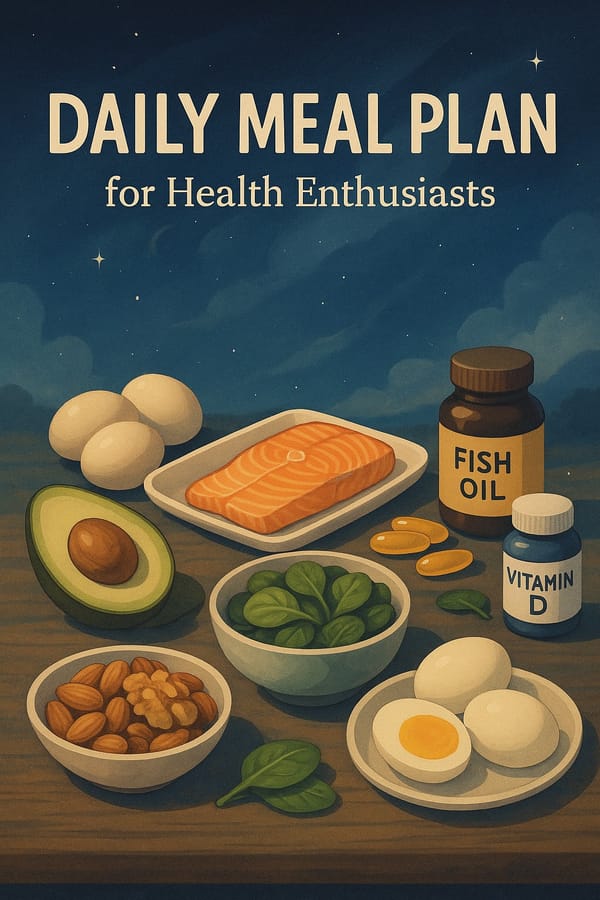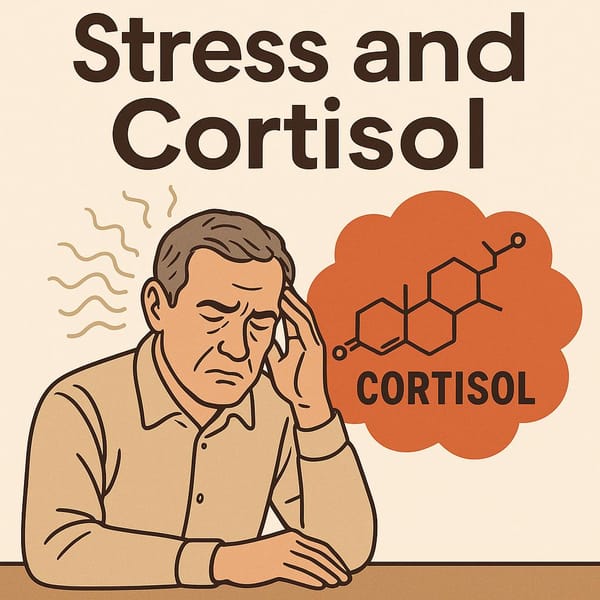Tips for a Heart-Healthy Diet for the 50+ Age Group
Discover key nutritional strategies for a stronger, healthier heart in your 50s and beyond. Learn how to choose the right foods, manage your diet wisely, and review the latest scientific evidence.

Introduction
Once you hit your 50s, various bodily systems begin to change—your cardiovascular system is particularly affected. As we age, the risks for chronic conditions like cardiovascular disease and high blood pressure increase. One key factor in reducing your risk of heart disease is consuming a balanced, nutrient-dense diet. In this article, we will guide you through practical tips for a heart-healthy diet tailored to individuals aged 50 and above, based on scientific research from both local and international sources. Our goal is to provide you with long-term strategies to support your heart’s health.
Why Nutrition Matters More in Your 50s
With age, the heart and blood vessels may gradually lose elasticity, and there’s a higher likelihood of plaque buildup in the arteries. Supporting your heart health through a nutrient-rich diet is an excellent way to help prevent issues like heart failure and to maintain a healthy balance of cholesterol and blood pressure.
- Lower LDL (Low-Density Lipoprotein) Cholesterol: LDL is considered "bad" cholesterol that can build up in arteries.
- Increase HDL (High-Density Lipoprotein) Cholesterol: HDL is the "good" cholesterol that transports excess lipids out of your arteries, aiding in their removal by the liver.
- Regulate Blood Pressure: Excess sodium (salt) can contribute to high blood pressure, while a diet rich in fruits and vegetables helps reduce sodium intake and provides potassium for blood pressure balance.
According to the American Heart Association (AHA), you should aim for 4–5 servings of fruits and vegetables per day and include a variety of foods from different food groups for comprehensive nutrient intake.
1. Prioritize Foods with Healthy Fats
1.1 Unsaturated Fats
Unsaturated fats can be divided into two main categories:
- Monounsaturated Fats: Found in olive oil, avocado oil, and certain nuts like almonds
- Polyunsaturated Fats: Such as omega-3 and omega-6 fatty acids found in salmon, mackerel, and flaxseeds
Eating polyunsaturated fats can help reduce the risk of cardiovascular disease, whereas saturated fats from fatty meats and full-fat dairy products can elevate LDL cholesterol.
1.2 Avoid Trans Fats
Trans fats are common in baked goods, processed snacks, shortening, and some margarines. They can promote inflammation and plaque buildup in the arteries, increasing your risk of heart disease. Always check food labels and avoid products containing partially hydrogenated oils.
Scientific Evidence: A study published in the New England Journal of Medicine found a significant correlation between high trans fat intake and increased risk of cardiovascular disease.
2. Emphasize Plant Proteins and Fish
2.1 Plant-Based Proteins
Sources of plant proteins like beans, lentils, and tofu offer a low-fat, high-fiber nutritional profile. They also contain antioxidants and minerals such as magnesium, potassium, and folate—nutrients beneficial for overall heart health.
2.2 Fish and Omega-3 Fatty Acids
Fatty fish, including salmon, tuna, and mackerel, provide substantial amounts of omega-3 fatty acids, which can reduce inflammation and help balance cholesterol. The U.S. Food and Drug Administration (FDA) recommends consuming fatty fish at least twice a week.
Scientific Evidence: Several studies, including those in Circulation (an AHA journal), report that diets rich in omega-3 fatty acids from fish can lower the risk of sudden cardiac death and arrhythmias.
3. Increase Fruit and Vegetable Intake
3.1 Antioxidants and Vitamins
Brightly colored fruits and vegetables—dark leafy greens (like kale and spinach), berries, and orange-yellow veggies (like carrots and pumpkin)—contain antioxidants such as polyphenols, beta-carotene, and vitamin C, which can protect cells from free radical damage linked to heart disease.
3.2 Fiber for Cholesterol Reduction
Soluble fiber—found in oats, beans, barley, and citrus fruits—can help lower LDL cholesterol by binding bile acids in the gut and removing them from the body.
Scientific Evidence: Research in the Journal of the American College of Nutrition indicates that consuming 25–30 grams of fiber per day supports heart health by lowering cholesterol levels in older adults.
4. Control Sodium Intake
4.1 How Sodium Affects Blood Pressure
Excess sodium is a key contributor to hypertension, a major risk factor for heart and vascular problems. Processed and pre-packaged foods are typically high in salt, so opting for fresh, whole foods is better for sodium control.
4.2 Tips for Reducing Sodium
- Use herbs and spices like pepper, garlic, cilantro, or basil instead of salt.
- Limit consumption of pickled or canned foods that usually contain high salt levels.
- Choose low-sodium seasonings.
Scientific Evidence: The World Health Organization (WHO) recommends that adults consume no more than 2,000 milligrams of sodium per day (approximately 5 grams of salt). Staying within this limit can help lower blood pressure and decrease cardiovascular risk.
5. Be Aware of Hidden Sugars
5.1 The Impact of Sugar on Blood Lipids
Added sugars in sweetened beverages, desserts, and other processed foods can contribute to weight gain and elevate the risk of high triglycerides. Excess sugar intake is also linked to type 2 diabetes, another risk factor for heart disease.
5.2 Techniques for Reducing Sugar
- Avoid sugary drinks like soda and overly sweet iced teas.
- Opt for natural sugar alternatives, such as stevia.
- Choose fresh fruits for dessert instead of cakes and pastries.
Scientific Evidence: Research by the American Diabetes Association shows that even modest reductions in added sugar can lower triglycerides and improve cholesterol levels in individuals with diabetes or metabolic syndrome.
6. Stay Hydrated
6.1 Importance of Water for Heart Health
Water helps maintain fluid balance and regulate blood pressure. Dehydration can cause your heart rate to rise and blood pressure to drop, leading to fatigue and placing additional strain on the heart.
6.2 Tips for Proper Hydration
- Sip water throughout the day instead of gulping large amounts at once.
- Monitor urine color; dark yellow urine may signal dehydration.
- Focus on plain water rather than sugary or heavily caffeinated beverages.
Scientific Evidence: Healthcare professionals generally recommend drinking 6–8 glasses of water per day, though exact needs vary by activity level and climate.
7. Alcohol: Consume Responsibly
7.1 Effects of Alcohol on the Cardiovascular System
Heavy alcohol use can elevate blood pressure and disrupt heart rhythms. Alcohol is also high in calories and can contribute to weight gain if consumed without moderation.
7.2 Recommended Intake
Men over 50 should limit alcohol intake to 1–2 standard drinks per day, while women should stick to 1 standard drink. It’s also wise to have alcohol-free days throughout the week.
Scientific Evidence: According to the Centers for Disease Control and Prevention (CDC), moderate alcohol consumption may have some benefits—such as resveratrol in red wine—but excessive drinking increases heart disease risks.
8. Don’t Forget Exercise and Physical Activity
Though the focus of this article is on dietary choices, physical activity is also crucial for heart health.
8.1 Exercise Types Suitable for the 50+ Age Group
- Brisk Walking or Light Jogging: Helps strengthen the heart and burn fat
- Yoga or Pilates: Improves flexibility, muscle strength, and helps reduce stress
- Light Resistance Training: Maintains bone density and muscle mass
8.2 Duration and Frequency
- Aim for at least 150 minutes per week of aerobic exercise (e.g., 30 minutes a day for 5 days)
- Incorporate strength training 2–3 times a week
9. Sample Heart-Healthy Menu for the 50+ Age Group
| Meal | Suggested Dishes |
|---|---|
| Breakfast | - Oatmeal with low-fat milk and berries - One boiled egg with a green salad |
| Lunch | - Chicken breast salad with vinaigrette dressing - Baked salmon with spinach |
| Dinner | - Brown rice congee with tofu and mushrooms - Tuna stew with tomatoes and mixed vegetables |
| Snacks | - Roasted almonds - Low-fat yogurt topped with fresh fruit |
10. The Value of Regular Check-Ups
10.1 Annual Medical Examinations
Yearly health screenings can help you track cholesterol, blood sugar, and blood pressure levels. Early detection of irregularities allows healthcare providers to offer timely interventions.
10.2 Monitoring Your Progress
- Check your blood pressure at home regularly.
- Keep a food and exercise journal or use a tracking app.
- Consult your physician or a nutritionist if you encounter any diet-related or cardiac issues.
Conclusion
Heart health is paramount for everyone, especially those entering their 50s when the body undergoes more noticeable changes. Emphasizing healthy fats, avoiding trans fats, controlling sodium, and limiting sugar can significantly reduce your risk of heart and vascular problems. Regular exercise and medical check-ups will further enhance these dietary measures and ensure you’re giving your heart the best possible care.
External Links
By making these nutritional and lifestyle modifications, you can pave the way for a robust, long-lasting heart. We hope these tips will help you make more informed dietary decisions and inspire you to start taking proactive care of your heart today.



